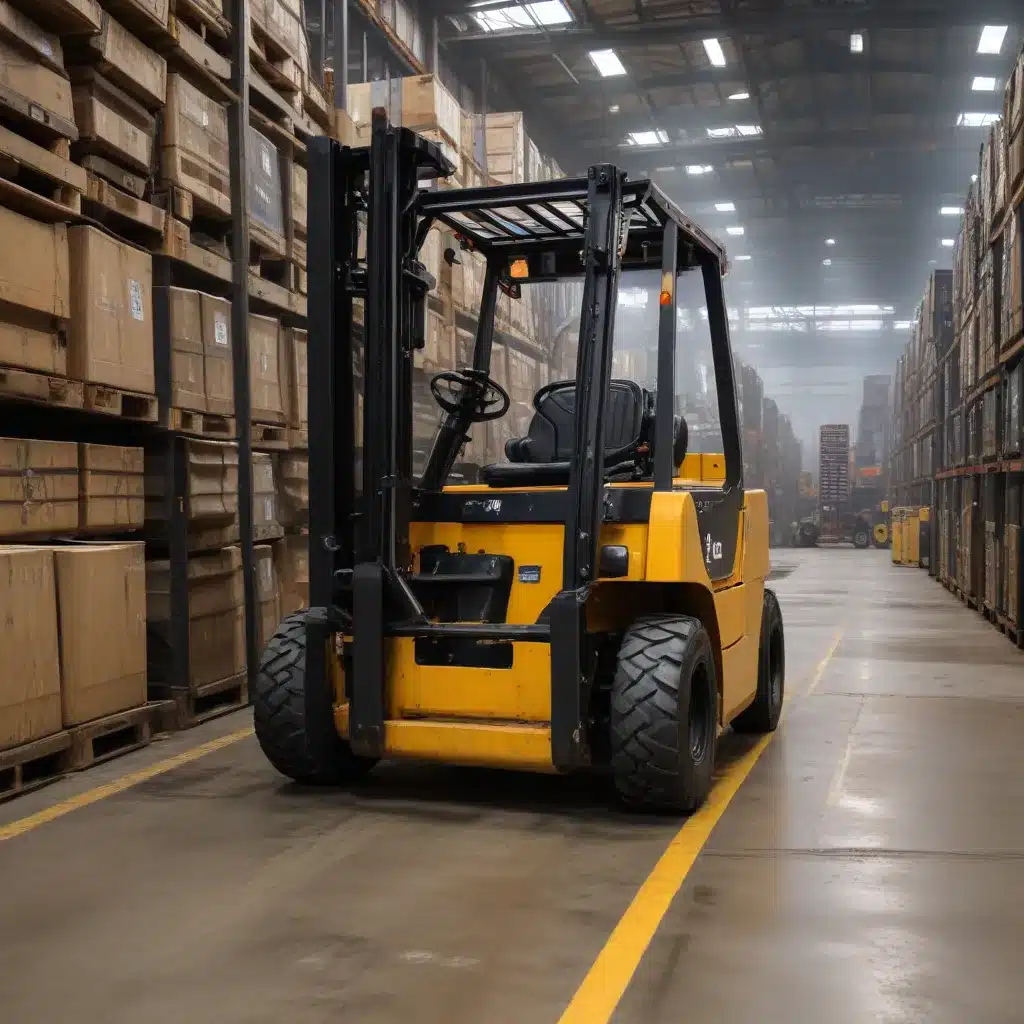
Revolutionizing Workplace Safety in the Steel Industry
The steel manufacturing industry is renowned for its vital role in global infrastructure and economic development, but it is also plagued by inherent safety challenges. From the hazardous materials handled to the colossal machinery involved, steel plants pose significant risks to worker well-being. Traditional safety management methods, which often rely on manual observations and subjective assessments, fall short in this complex environment. However, the emergence of computer vision technology offers a transformative solution to this pressing issue.
Leveraging Computer Vision for Forklift Safety
Forklifts are indispensable in steel manufacturing, facilitating the movement of heavy materials across expansive facilities. Yet, the operation of these powerful machines comes with considerable risks, including collisions, tip-overs, and the potential for pinning accidents. By integrating computer vision, steel companies can harness the power of advanced algorithms to enhance forklift safety and significantly reduce the incidence of such incidents.
Addressing Line-of-Sight Challenges
One of the primary concerns in forklift operation is the driver’s line of sight. Obstructed views can lead to collisions with objects, equipment, or even pedestrians. Computer vision systems equipped on forklifts can continuously monitor the operator’s line of sight, alerting them to any obstructions in real-time. These systems can detect when the load being carried blocks the driver’s view and suggest alternative handling methods, such as carrying the load at a lower height or using mirrors and cameras to navigate safely.
Ensuring Proper Blade Positioning
The position of the forklift’s blades (forks) is critical for safe operation. Driving with the blades raised too high can lead to tipping accidents, especially when the forklift is turning or moving over uneven surfaces. Computer vision can continuously monitor the height of the blades and alert operators when they are positioned unsafely. By ensuring that blades are kept at the recommended height off the ground, computer vision aids in maintaining the forklift’s stability and preventing tip-over incidents.
Detecting Overhead Hazards
Carrying loads at an excessive height not only risks tipping but also poses overhead hazards, such as striking fixtures, beams, or other overhead obstacles. Computer vision can help detect the proximity of overhead structures and warn operators before collisions occur. This capability is particularly useful in steel manufacturing environments, where variable ceiling heights and temporary structures can create additional challenges.
Preventing Pinned-By Incidents
Pinned-by incidents, where operators or pedestrians are trapped or crushed between the forklift and another object, are among the most severe accidents associated with forklift use. Computer vision can play a vital role in preventing these incidents by detecting humans or obstacles in the forklift’s path or behind it while reversing. Advanced detection algorithms can differentiate between inanimate objects and people, allowing for timely alerts and automated stopping mechanisms to protect workers from being pinned.
Implementing Computer Vision in the Steel Industry
The successful integration of computer vision into steel manufacturing operations requires a multifaceted approach. First, a comprehensive review of the industry’s unique hazards, as outlined in the research from the MDPI study, is essential. This analysis helps identify the specific safety challenges that computer vision can address, ensuring a tailored solution.
Next, a thorough evaluation of available computer vision systems, as demonstrated by the TOPSIS decision-making methodology in the MDPI study, is crucial. This assessment process enables steel companies to select the most suitable system that can effectively handle the industry’s complexities, such as the challenges posed by grayscale imagery in the steel mini-mill environment.
The MDPI study’s pilot case, which evaluated the performance of various YOLOv5, YOLOv8, and YOLOv9 models, provides valuable insights into the capabilities and limitations of these computer vision algorithms in the steel industry context. The high overall accuracy in hard hat detection, with YOLOv9c slightly outperforming others, underscores the feasibility of computer vision-based safety management. However, the study also highlights the need for larger, more diverse datasets and advanced techniques to address industry-specific complexities, such as class imbalance and the accurate identification of absent hard hats.
Unlocking the Full Potential of Computer Vision
As the steel industry continues to embrace technological advancements, the integration of computer vision-based safety management systems holds immense promise. By enhancing visibility, ensuring proper blade positioning, alerting operators to overhead hazards, and preventing pinned-by incidents, these systems can significantly reduce the risk of accidents and create safer work environments.
Moreover, the adoption of computer vision in forklift safety protocols not only protects workers but also improves operational efficiency by preventing costly accidents and equipment damage. This underscores the technology’s value in modernizing industrial settings and reinforces the importance of continuous innovation in occupational health and safety.
To fully unlock the potential of computer vision in the steel industry, it is essential to foster collaboration between researchers, industry experts, and technology providers. By working together to address the unique challenges faced by steel manufacturers, such as the limitations posed by grayscale imagery, the industry can develop more robust and effective computer vision solutions.
Furthermore, the dissemination of best practices and successful case studies, as demonstrated by the WorldSteel Association’s recognition of excellence in safety initiatives, can inspire other steel companies to embrace this transformative technology. By sharing knowledge and fostering a culture of continuous improvement, the industry can collectively pave the way for enhanced workplace safety and operational efficiency.
In conclusion, the integration of computer vision into steel manufacturing operations represents a game-changing approach to safety management. By addressing common forklift-related hazards, this technology empowers steel companies to create safer work environments, protect their most valuable asset – their workforce – and unlock new levels of operational excellence. As the industry continues to evolve, the adoption of computer vision-based safety solutions will become an increasingly crucial differentiator, setting the stage for a safer and more prosperous future in the steel manufacturing sector.

